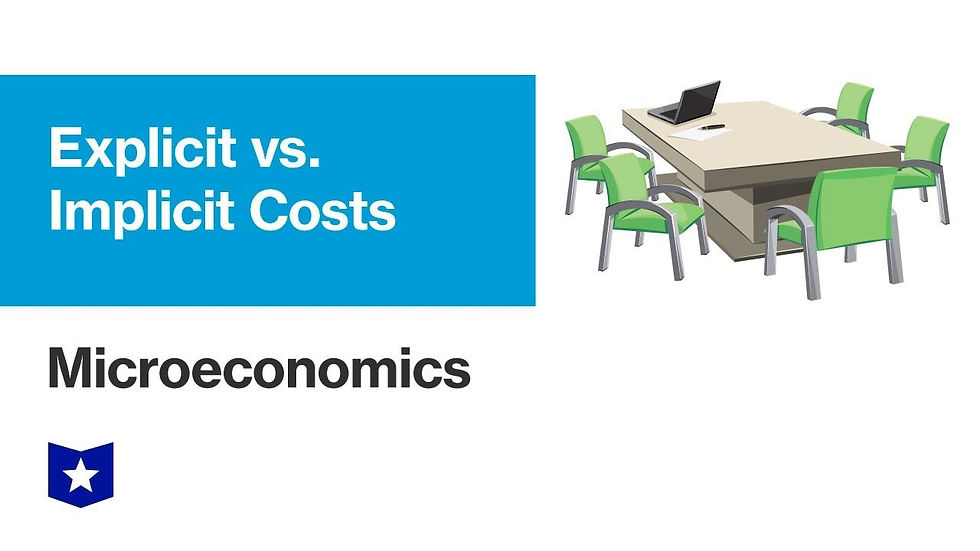Opportunity Costs, Explicit and Implicit Costs, and Economists and Accountants
- Caleb Shin

- Nov 4, 2020
- 1 min read
Updated: Nov 16, 2020

Imagine you are a professional basketball player. On one hand, you could go into the business industry and make 200k a year. On the other, you can take a professional contract for 1 million a year. Obviously, you would choose the basketball contract. But what do you lose? This is what we call opportunity costs. Opportunity costs are next best things you give up by taking another path. These costs can be both non-monetary and monetary. For example, in the previous basketball player scenario, the opportunity cost of taking the contract is the 200k dollars a year that you would have made as a businessman. Even though you took the obviously better choice, there was still a cost. This cost was monetary, but what about non-monetary costs? Non-monetary opportunity costs can be a variety of things, from time that you sacrifice to achieve a goal, to relationships that you give up in pursuit of your dreams. Opportunity costs are known as implicit costs.

These costs are implied because they are potential earnings, as opposed to explicit costs, which are outright monetary costs. The difference between an accountant and an economist is that an accountant will not take into account the implicit costs, whereas an economist will take into account the implicit costs. For example, in the basketball scenario, an accountant would tell you that you don’t lose anything, whereas an economist would tell you that you lost 200k dollars a year. Knowing these differences can help you make the right decisions in your financial journey, taking into account the other costs besides the outright money.



I've never taken microeconomics before so it was very thought provoking to understand that even in microeconomics non-monetary opportunities known as implicit costs are taken into consideration which is something I didn't know before I read this article.